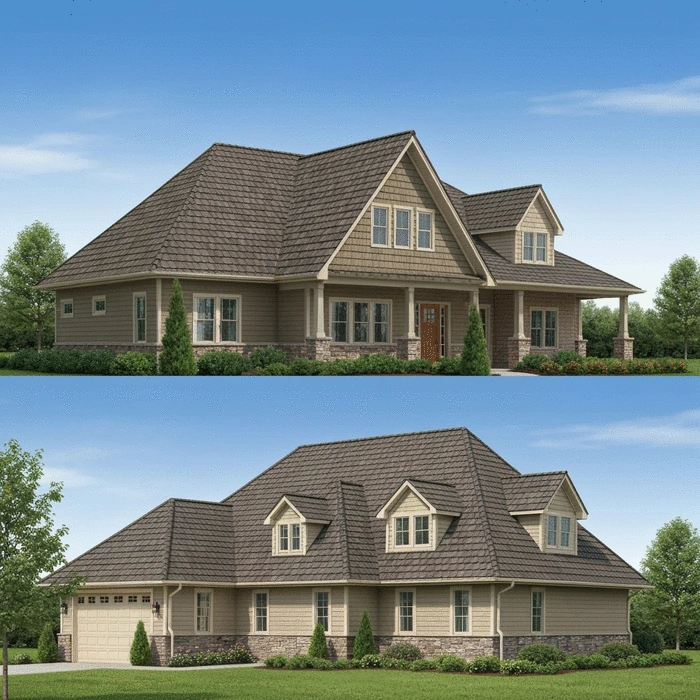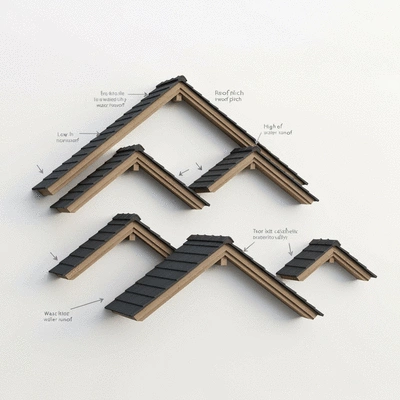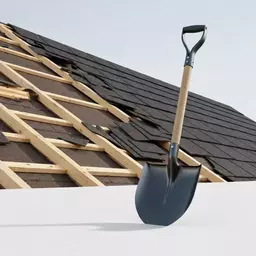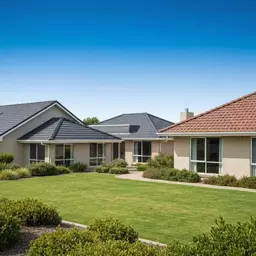Style:
Hip Roof
- • Slopes down on all four sides.
- • Excellent stability, withstands high winds.
- • Popular in storm-prone areas.
- • Variations: Standard & Pyramid.
Get Jordan M. Knox's latest insights on roofing materials, maintenance, and expert tips delivered directly to your inbox. Stay ahead of the curve!
Posted on: 2025-09-29
By: Jordan M. Knox
Choosing the right roof style can significantly influence your home's aesthetics and functionality. With a variety of designs available, understanding their unique characteristics is crucial for making an informed decision. Here’s what you can expect to learn about different roof styles.
This visual presents a side-by-side comparison of three common roof styles: Hip, Gable, and Mansard, highlighting their unique features and benefits.
When it comes to choosing the right roof for your home, understanding the various styles is essential. Each roof type has its own set of characteristics, designs, and benefits. At Roofing Explained, we break down three popular styles: hip, gable, and mansard roofs. Let's dive in!
A hip roof is a versatile design that slopes down on all four sides, creating a unique and aesthetically pleasing structure. This style provides excellent stability and is known for its ability to withstand high winds. Hip roofs are particularly popular in areas prone to storms, making them a reliable choice for homeowners.
Both styles have a similar foundation, but the pyramid hip roof's unique shape gives it a distinctive flair. Choosing between the two often depends on the overall design you envision for your home.
Gable roofs are characterized by their triangular shape, formed by two sloping sides that meet at a ridge. This classic design is not only visually appealing but also provides ample space for ventilation and insulation. Gable roofs are often favored for their simplicity and efficiency in shedding rain and snow.
Each variation of gable roofs can significantly affect your home's aesthetic and functionality. Think about what complements your home's architecture best! Learn more about understanding different roof materials that pair well with gable designs.
Mansard roofs are renowned for their distinctive double slope on each side, creating an elegant and spacious upper floor. This design not only adds character but also maximizes usable space. This style has a rich history, originating in France during the Renaissance period.
Choosing a mansard roof can transform your home, offering a unique blend of history and modern flair. If you're drawn to architectural elegance, this could be the perfect choice for you!
Roof pitch refers to the steepness of a roof, affecting both its appearance and performance. Higher pitch roofs are often associated with increased drainage efficiency, which is crucial in areas with heavy rainfall or snow. On the other hand, lower pitch roofs can be easier to work on and offer more interior space.
When selecting your roof pitch, consider your local climate, the architectural style of your home, and your personal preferences. A well-chosen roof pitch will enhance both the beauty and functionality of your home.
When considering your roof style, which factor matters most to you? Is it the aesthetic appeal, durability, or maintenance requirements? Share your thoughts below:
As we wrap up our exploration of various roof styles, it's vital to take a moment to reflect on the key insights we’ve gathered. Choosing the right roof involves understanding not just the aesthetics, but also the functionality and durability of each roof type. Whether you’re drawn to the sleek lines of a hip roof, the classic look of a gable, or the distinctive charm of a mansard, your decision should align with both your home’s architecture and your personal needs.
In the end, it all boils down to weighing the pros and cons tailored to your unique situation. Do you prioritize aesthetics over durability? Or is maintenance a significant concern for you? These considerations can guide you toward the roofing choice that best enhances your home. Consider how regular roofing maintenance can extend the life of any roof style.
With so many roof styles available, it's important to take a step back and evaluate their characteristics. Here’s a quick overview of what we covered:
By assessing these factors, you can make a more informed choice that suits your home and lifestyle!
Remember, no roof style is perfect, and each has its own set of advantages and drawbacks. It's crucial to consider how these factors align with your personal preferences and the specific conditions of your property. Think about your local climate, the architectural style of your home, and your long-term goals for maintenance and energy efficiency.
Feeling a bit overwhelmed? That’s completely normal! I encourage you to explore your options further and consult with experts in roofing. Finding a contractor who understands your vision can make a world of difference. At Roofing Explained, we can help connect you with trusted professionals who can assist in your decision-making process.
To help you along the way, consider utilizing some visual tools and resources:
Armed with these resources, you'll be better prepared to make an informed choice that suits your needs and enhances your home’s appeal!
Lastly, never underestimate the importance of consulting with roofing contractors for both installation and maintenance. These professionals can provide valuable insights into the specific needs of your roof based on its style and the conditions of your area. They can also help you navigate the complexities of warranties, local building codes, and best practices for maintaining the longevity of your roof.
In conclusion, making an educated choice about your roofing style is a significant step in ensuring your home’s beauty and durability for years to come. Don’t hesitate to reach out to us at Roofing Explained if you have more questions or need assistance in your roofing journey!
A1: Hip roofs slope down on all four sides, offering excellent stability against high winds. Gable roofs have a triangular shape with two sloping sides, providing good ventilation and efficient rain/snow shedding. Mansard roofs feature a distinctive double slope on each side, maximizing upper floor space and adding historical elegance.
A2: Hip roofs are particularly well-suited for storm-prone areas due to their design, which slopes down on all four sides, providing superior stability and resistance to high winds.
A3: Roof pitch, or steepness, impacts both aesthetics and functionality. High-pitch roofs offer better drainage and a more dramatic look, while low-pitch roofs are generally easier to maintain and integrate well with modern designs. Your local climate and architectural style should influence your choice.
A4: Yes, mansard roofs are designed with a double slope on each side, which effectively maximizes the usable space on the upper floor, often allowing for additional rooms or attic conversions.
A5: Consulting roofing contractors is crucial for both installation and maintenance. They provide expert insights into the specific needs of your roof based on its style and local conditions, help navigate warranties and building codes, and ensure the longevity of your roof through best practices.



 Ever faced the daunting task of removing old roof shingles? The right tool can transform this labor-
Ever faced the daunting task of removing old roof shingles? The right tool can transform this labor-
 Have you ever stopped to think about how your local weather might be silently dictating the lifespan
Have you ever stopped to think about how your local weather might be silently dictating the lifespan
 Have you considered how your roof can affect your home's comfort and energy efficiency? Understandin
Have you considered how your roof can affect your home's comfort and energy efficiency? Understandin